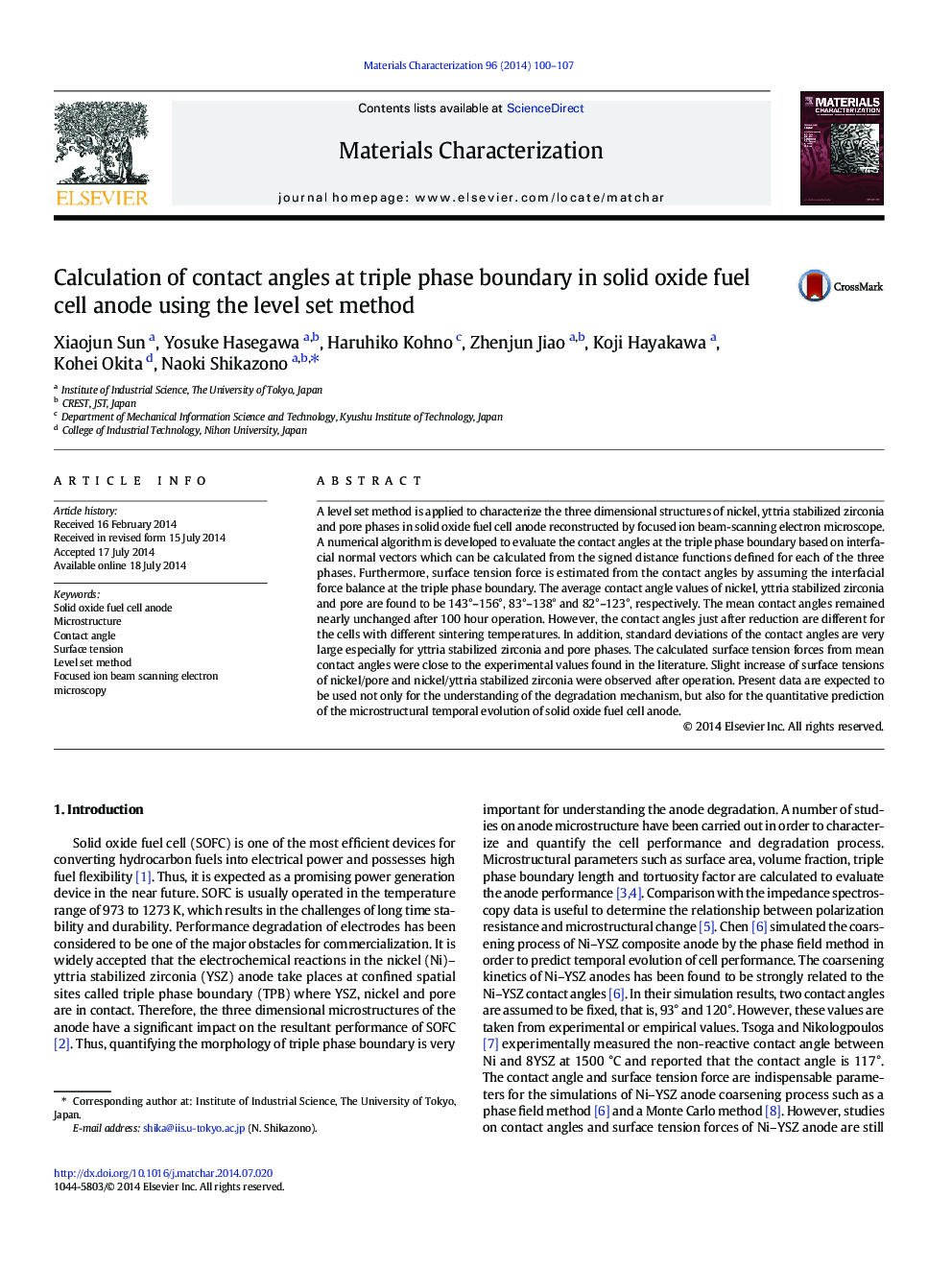| Article ID | Journal | Published Year | Pages | File Type |
|---|---|---|---|---|
| 1571049 | Materials Characterization | 2014 | 8 Pages |
•A level set method is applied to characterize the 3D structures of SOFC anode.•A numerical algorithm is developed to evaluate the contact angles at the TPB.•Surface tension force is estimated from the contact angles.•The average contact angle values are found to be 143o-156o, 83o-138o and 82o-123o.•Present data are expected to understand degradation and predict evolution of SOFC.
A level set method is applied to characterize the three dimensional structures of nickel, yttria stabilized zirconia and pore phases in solid oxide fuel cell anode reconstructed by focused ion beam-scanning electron microscope. A numerical algorithm is developed to evaluate the contact angles at the triple phase boundary based on interfacial normal vectors which can be calculated from the signed distance functions defined for each of the three phases. Furthermore, surface tension force is estimated from the contact angles by assuming the interfacial force balance at the triple phase boundary. The average contact angle values of nickel, yttria stabilized zirconia and pore are found to be 143°–156°, 83°–138° and 82°–123°, respectively. The mean contact angles remained nearly unchanged after 100 hour operation. However, the contact angles just after reduction are different for the cells with different sintering temperatures. In addition, standard deviations of the contact angles are very large especially for yttria stabilized zirconia and pore phases. The calculated surface tension forces from mean contact angles were close to the experimental values found in the literature. Slight increase of surface tensions of nickel/pore and nickel/yttria stabilized zirconia were observed after operation. Present data are expected to be used not only for the understanding of the degradation mechanism, but also for the quantitative prediction of the microstructural temporal evolution of solid oxide fuel cell anode.
